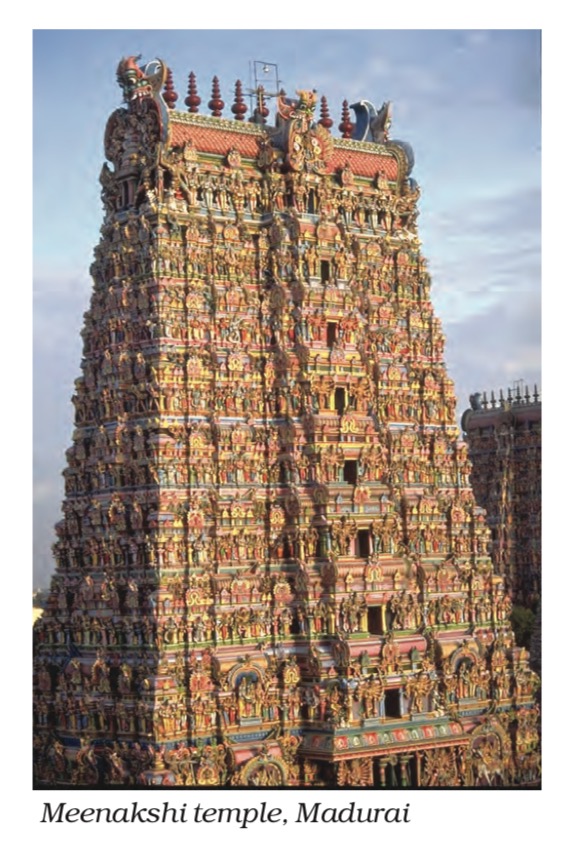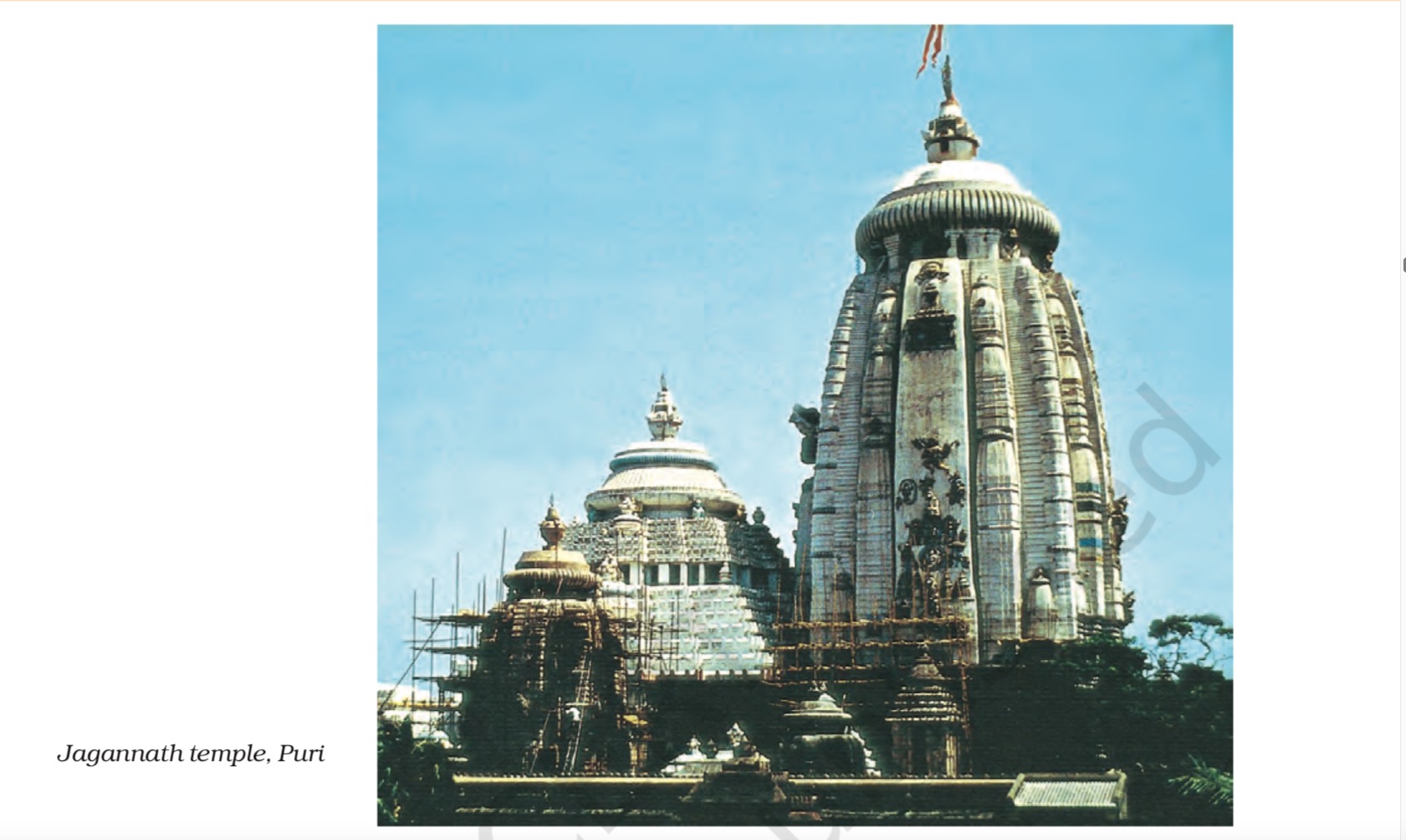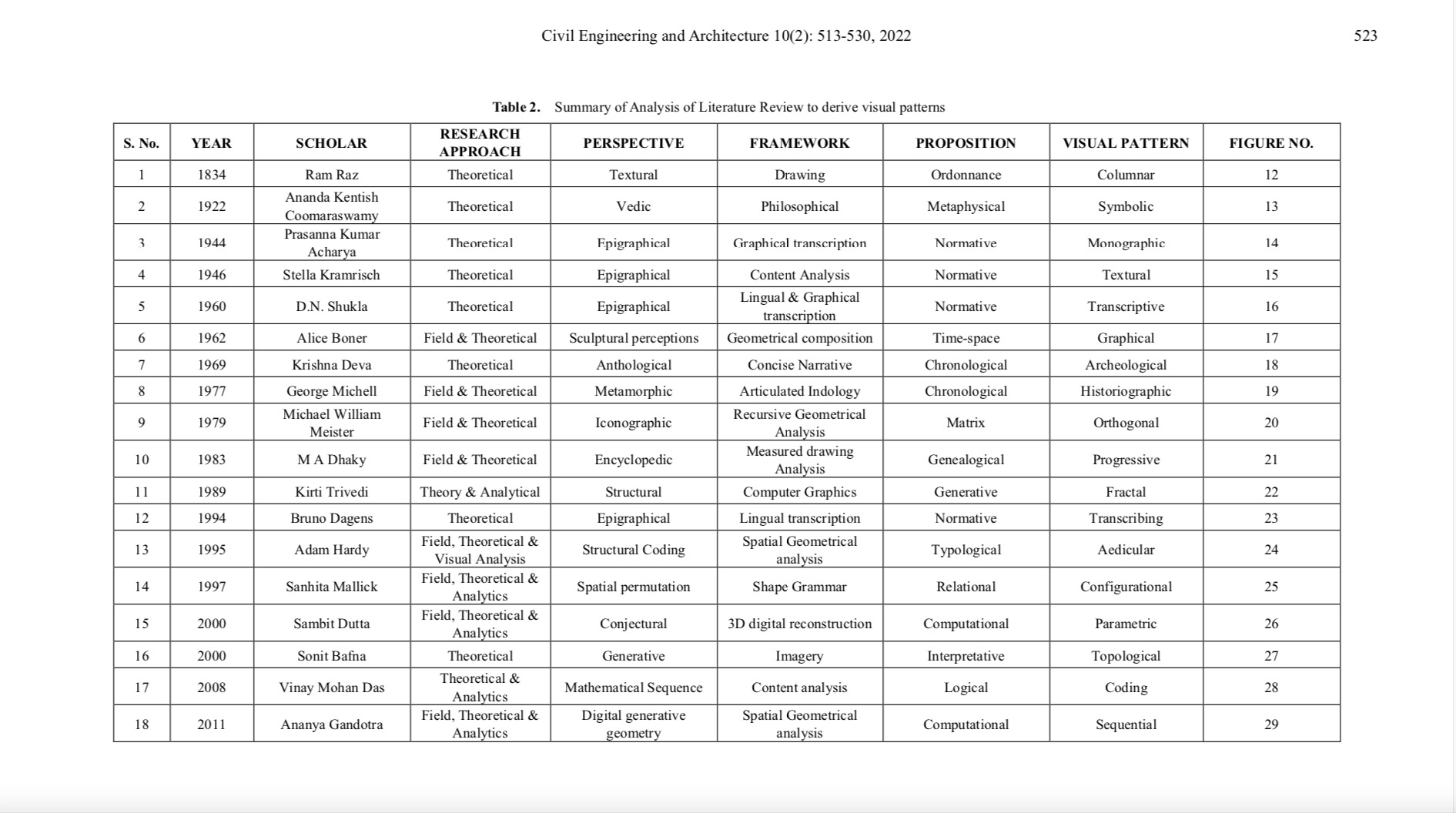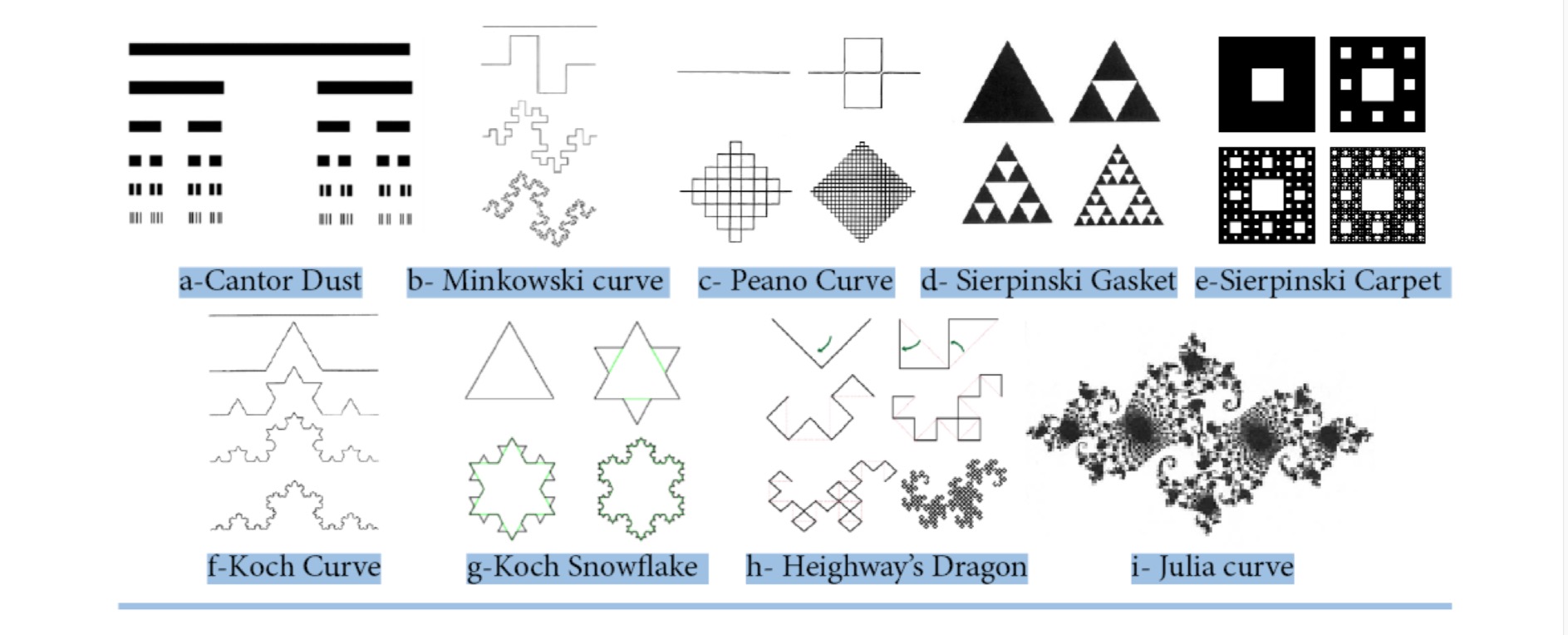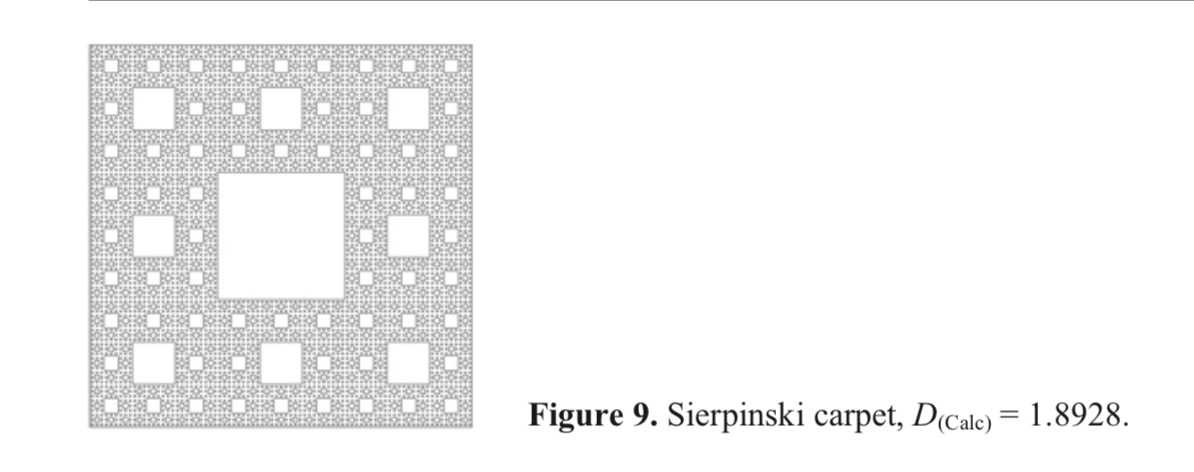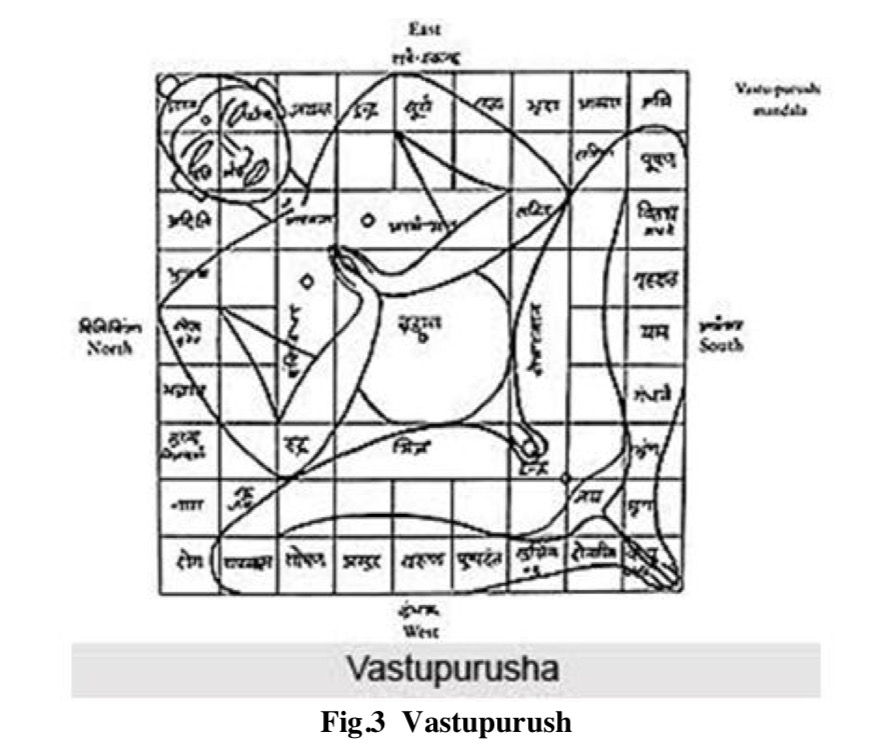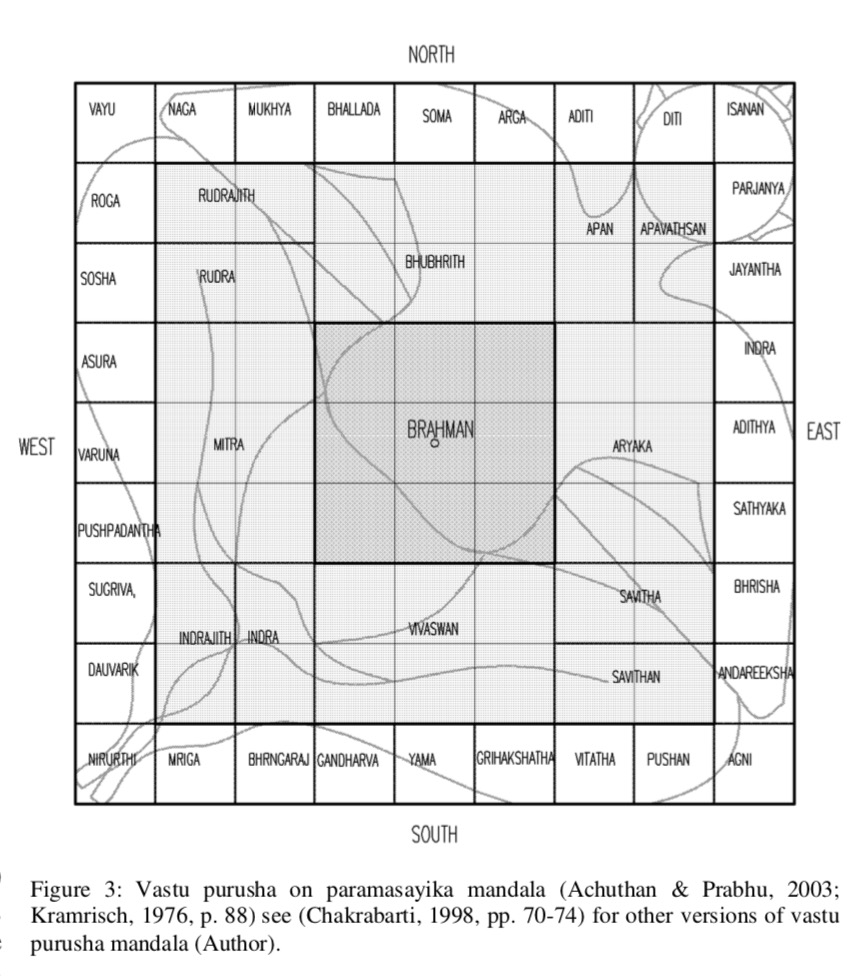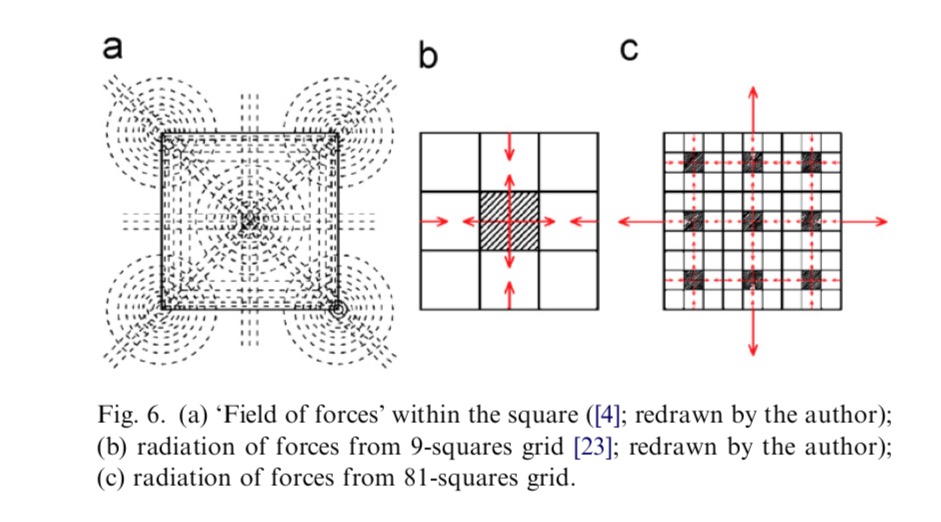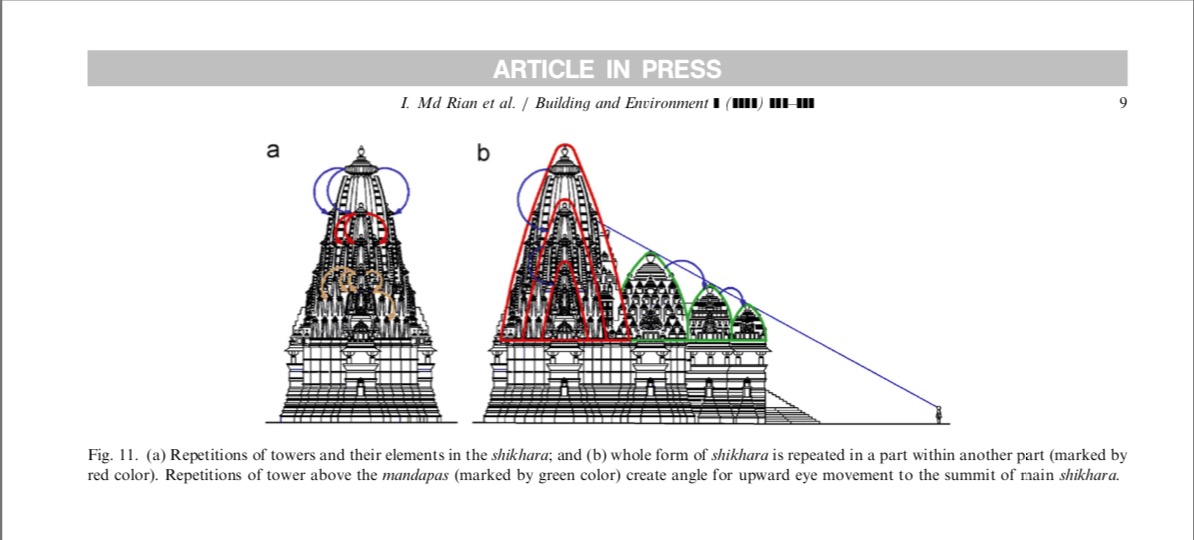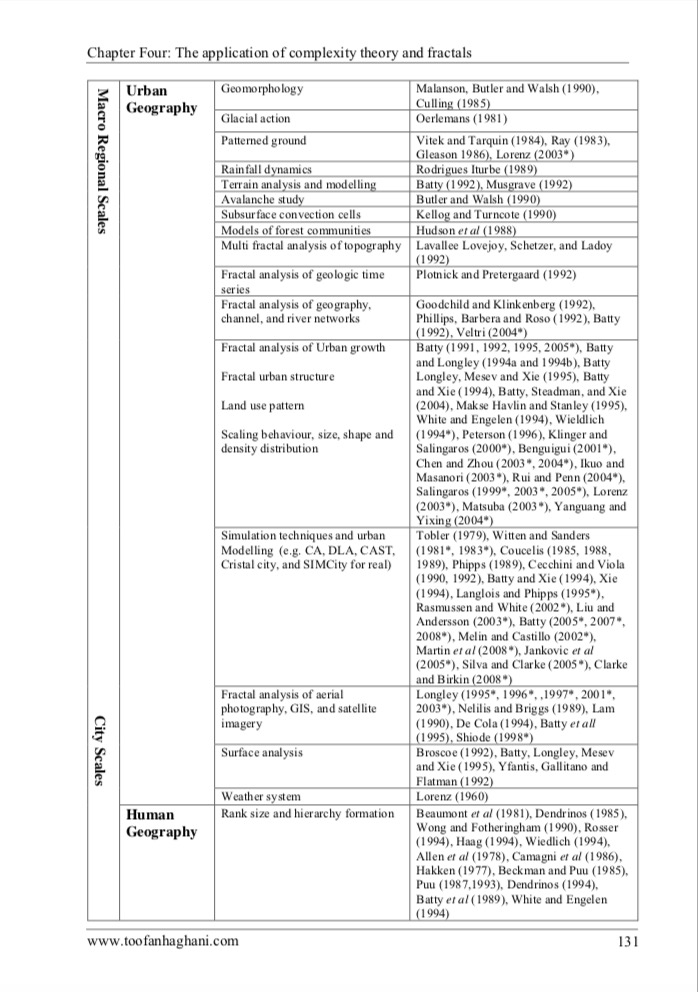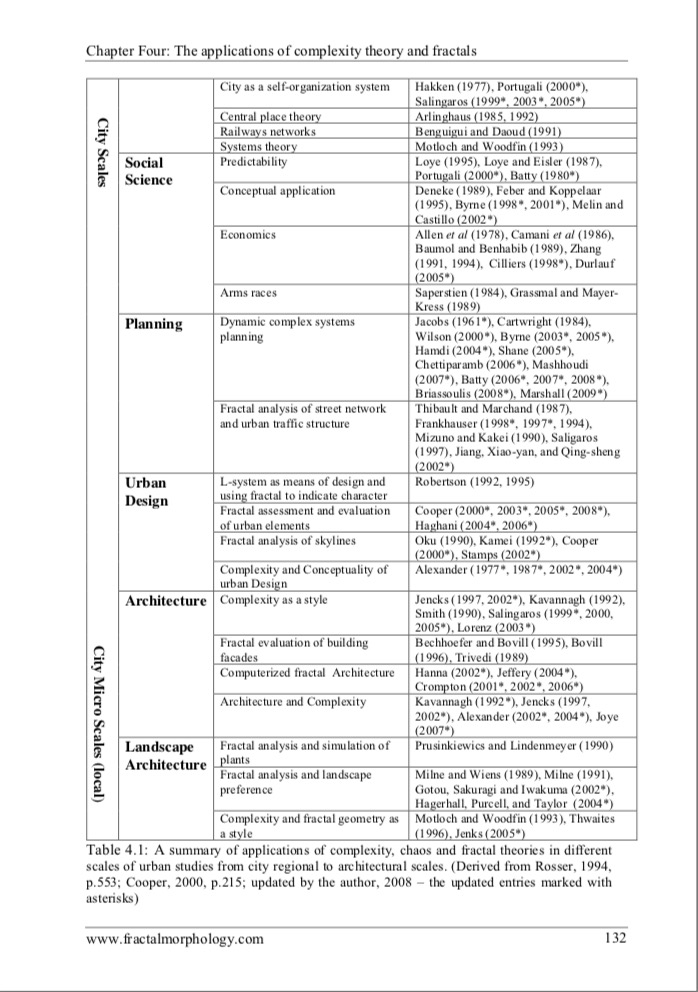Cantor Sets, Sierpinski Carpets, Menger Sponges
Key Terms
- Cantor Sets
- Sierpinski Carpets
- Menger Sponges
- Fractals
- Dimension
- Georg Cantor
- Waclaw Sierpinski
- Karl Menger
- 3 Steps of Vishnu
- Maha Maya
- Space Time Geometry
- Fractal Space Time
- Cantorian Space Time
- 9 x 9 square
- 8 x 8 square
- 18 and 81
- 56 and 65 (64 + 1)
- Chhapan Bhog
- Chousath Kala
- Chousath Yogini
- Fractal Dimension
- Noninteger Dimension
- Euler’s Number
- 64 Tetrahedron
- Kal Bhairav
- Kali
- Geometry of Space Time
- Truncated Icosahedron
- Soccer Ball Geometry
- Pentagon and Hexagon
- 9 Planets
- 27 Nakshatras
- 14 Lokas
- Hausdorff Dimension
- Non Commutative Geometry
Cantor Sets, Sierpinski Carpets, Menger Sponges
- The Menger Sponge is formed by removing cubes from the original cube in an iterative manner.
- This fractal has dimension d = log 20 / log 3 = 2.7268 placing
it a space between two and three dimensions. - The Sierpinski carpet has fractal dimension = log 8/ log 3 = 1.8928.
- The fractal dimension of the ternary Cantor set is DH = ln(2)/ln(3) = 0.6309.
Source: A Short History of Fractal Dimension
Source: A Short History of Fractal Dimension
Source: A Short History of Fractal Dimension
Source: A Short History of Fractal Dimension
Source: A Short History of Fractal Dimension
Source: A Short History of Fractal Dimension
Source: Menger Universal Spaces: Introduction to Fractal Geometry and Chaos

Source: Menger Universal Spaces: Introduction to Fractal Geometry and Chaos

Source: Menger Universal Spaces: Introduction to Fractal Geometry and Chaos

Source: Fractals: The Menger Sponge

Source: THE UNIVERSALITY OF THE HYPERPOLAR IMAGES OF THE SIERPINSKI CARPET AND THE MENGER SPONGE

Source: THE UNIVERSALITY OF THE HYPERPOLAR IMAGES OF THE SIERPINSKI CARPET AND THE MENGER SPONGE

Source: THE UNIVERSALITY OF THE HYPERPOLAR IMAGES OF THE SIERPINSKI CARPET AND THE MENGER SPONGE

Source: Mathematical Impressions: The Surprising Menger Sponge Slice

Source: Mathematical Impressions: The Surprising Menger Sponge Slice

Source: Mathematical Impressions: The Surprising Menger Sponge Slice

Source: Mathematical Impressions: The Surprising Menger Sponge Slice

Source: Mathematical Impressions: The Surprising Menger Sponge Slice

Source: Mathematical Impressions: The Surprising Menger Sponge Slice

Space, Fractal Spacetime, Cantorian Spacetime in Cosmology
Prof. M. S. El Naschie has published many research papers on Fractal Spacetime, Cantorian Spacetime, Dark Energy, and structure and geometry of space.
Please see references.
Source: A Fractal Menger Sponge Space-Time Proposal to Reconcile Measurements and Theoretical Predictions of Cosmic Dark Energy

My Related Posts
Growth and Form in Nature: Power Laws and Fractals
Fractal Geometry and Hindu Temple Architecture
Indra’s Net: On Interconnectedness
Consciousness of Cosmos: A Fractal, Recursive, Holographic Universe
Maha Vakyas: Great Aphorisms in Vedanta
Interconnected Pythagorean Triples using Central Squares Theory
Myth of Invariance: Sound, Music, and Recurrent Events and Structures
Key Sources for Research
Mathematical Impressions: The Surprising Menger Sponge Slice
Simons Foundation
Menger Universal Spaces
Introduction to Fractal Geometry and Chaos
Matilde Marcolli
MAT1845HS Winter 2020, University of Toronto
Click to access FractalsUToronto7.pdf
Fractals: The Menger Sponge
LCAO approximation for scaling properties of the Menger sponge fractal
Kazuaki Sakoda
Optics Express Vol. 14, Issue 23, pp. 11372-11384 (2006) • https://doi.org/10.1364/OE.14.011372
Squeezing Pi from a Menger Sponge
https://community.wolfram.com/groups/-/m/t/822984
mrly fractals
Inspired by Carlo Mats Vincenti Mitchener
Graphics by Paul Bourke
December 2022
http://paulbourke.net/fractals/mrlymath/index.html
Marley Math: Cantor Sets, Sierpinski Carpets, Menger Sponges, And More
Carlo Mats Vincenti Mitchener
24 April 2022
A Fractal Menger Sponge Space-Time Proposal to Reconcile Measurements and Theoretical Predictions of Cosmic Dark Energy
Mohamed S. El Naschie
Department of Physics, University of Alexandria, Egypt
Email: Chaossf@aol.com
International Journal of Modern Nonlinear Theory and Application
Vol. 2 No. 2 (2013) , Article ID: 32969 , 15 pages
https://www.scirp.org/html/1-2340074_32969.htm
The Mystery of the Menger Sponge
NY Times
2011
New Classes of Regular Symmetric Fractals.
Kak, Subhash (2021):
TechRxiv. Preprint. https://doi.org/10.36227/techrxiv.14714094.v2
THE GENERALIZATION OF SIERPINSKI CARPET AND MENGER SPONGE IN n-DIMENSIONAL SPACE
YUTING FENG and
https://doi.org/10.1142/S0218348X17500402
Vol. 25, No. 05, 1750040 (2017)
https://www.worldscientific.com/doi/10.1142/S0218348X17500402
Hausdorff Measures and Hausdorff Dimensions of the Invariant Sets for Iterated Function Systems of Geometric Fractals
Md. Jahurul Islam1,*, Md. Shahidul Islam1, Md. Shafiqul Islam2
1Department of Mathematics, University of Dhaka, Bangladesh
2School of Mathematics and Computational Science, University of Prince Edward Island, Canada
Mathematics and Statistics 6(3): 25-33, 2018
DOI: 10.13189/ms.2018.060301
Sound absorption by Menger sponge fractal
Tetsuji Kawabea), Takatsuna Miyazakib), Daisuke Oka, Sin’ichiro Koyanagic), and Atsushi Hinokidani
The Journal of the Acoustical Society of America 125, 2830 (2009); https://doi.org/10.1121/1.3095807
https://asa.scitation.org/doi/full/10.1121/1.3095807
Fractal Dimensions in Circular and Spiral Phenomena.
Kak, Subhash (2022):
TechRxiv. Preprint. https://doi.org/10.36227/techrxiv.21766706.v1
Sierpinski Carpets as Julia sets for Imaginary 3-Circle Inversions
Daniel M. Look
Williams College
Is Spacetime Fractal and Quantum Coherent in the Golden Mean?
Mae-Wan Ho , Mohamed el Naschie & Giuseppe Vitiello
Global Journal of Science Frontier Research
Volume XV Issue I Version I Year 2015
Real Analysis: The Sierpinski Carpet and its Remarkable Area Explained
Analysis on the Sierpinski Carpet
M. T. Barlow
Centre de Recherches Mathematiques
CRM Proceedings and Lecture Notes
Homeomorphisms of the Sierpinski Carpet
Karuna S. Sangam
Bard College, ks4217@bard.edu
Senior Projects Spring 2018
Bard Undergraduate Senior Projects
A SIERPINSKI CARPET LIKE FRACTAL WITHOUT STANDARD SELF-SIMILAR ENERGY
SHIPING CAO AND HUA QIU
The construction of brownian motion on the Sierpinski carpet
MARTIN T. BARLOW
RICHARD F. BASS
Annales de l’I. H. P., section B, tome 25, no 3 (1989), p. 225-257
Click to access AIHPB_1989__25_3_225_0.pdf
Sierpinski
https://gofiguremath.org/fractals/sierpinski/
On the Hausdorff dimension of general Cantor sets,
A. F . Beardon,
Proc. Camb. Phil. Soc, 61 (1965), 679-694.
“Sur une courbe cantorienne qui contient une image biunivoque et continue de toute courbe donne”
W. Sierpiήski,
Comptes Rendus, 162 (1916), 629-642.
THE HAUSDORFF DIMENSION OF GENERAL SIERPINSKI CARPETS
CURT McMULLEN
Nagoya Math. J. Vol. 96 (1984), 1-9
Uniqueness of Brownian motion on Sierpinski carpets.
Richard F. Bass, Takashi Kumagai, Martin T. Barlow, Alexander Teplyaev,
J. Eur. Math. Soc. 12 (2010), no. 3, pp. 655–701
https://ems.press/journals/jems/articles/3456
GEODESICS IN THE SIERPINSKI CARPET AND MENGER SPONGE
ETHAN BERKOVE and DEREK SMITH
Fractals
Vol. 28, No. 07, 2050120 (2020)
https://doi.org/10.1142/S0218348X20501200
https://www.worldscientific.com/doi/10.1142/S0218348X20501200
The Theory of Cantorian Spacetime and High Energy Particle Physics (An Informal Review).
El Naschie, M.S. (2009)
Chaos, Solitons & Fractals, 41, 2635-2646.
http://dx.doi.org/10.1016/j.chaos.2008.09.059
The Ultimate Unified Physico Mathematical Theory of Nature
M.S. El Naschie
Distinguished Professor, Department of Physics, Faculty of Science, University of Alexandria, Alexandria, Egypt.
Date of publication (dd/mm/yyyy): 22/08/2022
International Journal of Innovation in Science and Mathematics
Volume 10, Issue 4, ISSN (Online): 2347–9051
Click to access IJISM_974_FINAL.pdf
Analysis on Fractal Objects
Uta Freiberg
Technische Universität Chemnitz
December 2005
Meccanica 40(4):419-436
DOI:10.1007/s11012-005-2107-0
https://www.researchgate.net/publication/226551998_Analysis_on_Fractal_Objects
Exponentially Decaying Discrete Dynamical Systems
Yogesh Joshi
CIty University of New York – Kingsborough Community College
Denis Blackmore
New Jersey Institute of Technology
April 2012
Recent Patents on Space Technology 2(1):37-48
DOI:10.2174/1877611611202010037
https://www.researchgate.net/publication/267391812_Exponentially_Decaying_Discrete_Dynamical_Systems
THE UNIVERSALITY OF THE HYPERPOLAR IMAGES OF THE SIERPINSKI CARPET AND THE MENGER SPONGE
Glaser, F. (1997, Fall).
The Cal Poly Pomona Journal of Interdisciplinary Studies, 10, 9-18.
https://scholarworks.calstate.edu/downloads/gx41mk81q?locale=es
EVALUATING THE EXACT INFINITESIMAL VALUES OF AREA OF SIERPINSKI’S CARPET AND VOLUME OF MENGER’S SPONGE
Yaroslav D. Sergeyev∗
Dipartimento di Elettronica, Informatica e Sistemistica, Universita` della Calabria, Via P. Bucci, Cubo 42-C, 87030 Rende (CS) – Italy
http://wwwinfo.deis.unical.it/∼yaro yaro@si.deis.unical.it
Chaos, Solitons & Fractals
Volume 42, Issue 5, 15 December 2009, Pages 3042-3046
https://www.sciencedirect.com/science/article/abs/pii/S0960077909003877
Dynamics of fractals in Euclidean and measure spaces
Md. Shahidul Islam and Md. Jahurul Islam 2017
J. Phys.: Conf. Ser. 890 012058
https://iopscience.iop.org/article/10.1088/1742-6596/890/1/012058/pdf
Cantor sets
March 2010
Ferdinand Chovanec
Armed Forces Academy of General Milan Rastislav Štefánik
https://www.researchgate.net/publication/228747023_Cantor_sets
Generalizations and Properties of the Ternary Cantor Set and Explorations in Similar Sets
by Rebecca Stettin
Ashland University
May 2017
Study of Variants of Cantor Sets Using Iterated Function System
Gen. Math. Notes, Vol. 23, No. 1, July 2014, pp. 45-58
Click to access 6_GMN-4682-V23N1.247122947.pdf
Volume of the hyperbolic cantor sets
Habibulla Akhadkulov & Yunping Jiang (2020)
Dynamical Systems, 35:2, 185-196,
DOI: 10.1080/14689367.2019.1659754
https://www.tandfonline.com/doi/full/10.1080/14689367.2019.1659754
THE GENERALIZED CAPACITY OF CANTOR SETS
A. F. BEARDON
The Quarterly Journal of Mathematics, Volume 19, Issue 1, 1968, Pages 301–304, https://doi.org/10.1093/qmath/19.1.301
https://academic.oup.com/qjmath/article-abstract/19/1/301/1570320?redirectedFrom=PDF
Box-Counting Dimension of the Cantor Set
A Note on the History of the Cantor Set and Cantor Function
JULIAN F. FLERON
SUNY at Albany
Albany, New York
Mathematics Magazine, Vol. 67, No. 2 (Apr., 1994), pp. 136-140
Published by: Mathematical Association of America
Stable URL: http://www.jstor.org/stable/2690689 .
Cantor Set and Its Properties
Zhixing Guo
University of California, Santa Barbara
April 23, 2014
Click to access mathcs103_s2014_zhixing_presentation.pdf
The Cantor Set and the Cantor Function
TMA4225 – Foundations of Analysis
On the measure of arithmetic sums of Cantor sets
Boris Solomyak∗
Department of Mathematics, University of Washington, USA
Indagationes Mathematicae
Volume 8, Issue 1, 1997, Pages 133-141
https://www.sciencedirect.com/science/article/pii/S0019357797833575
Multi Dimensional Cantor Sets in Classical and Quantum Mechanics
M. S. EL NASCHIE
Chaos, Solitons & Fractals Vol. 2, No. 2. pp.211-220. 1992
An Exploration of the Cantor Set
Christopher Shaver
Rockhurst University, shaverc@hawks.rockhurst.edu
Rose-Hulman Undergraduate Mathematics Journal: Vol. 11 : Iss. 1 , Article 1.
2010
An Exact Mathematical Picture of Quantum Spacetime
Mohamed S. El Naschie
Department of Physics, University of Alexandria, Alexandria, Egypt Email: Chaossf@aol.com
Advances in Pure Mathematics, 2015, 5, 560-570
http://dx.doi.org/10.4236/apm.2015.59052
https://www.scirp.org/(S(351jmbntvnsjt1aadkposzje))/journal/paperinformation.aspx?paperid=57895
On El Naschie’s Fractal-Cantorian Space-Time and Dark Energy—A Tutorial Review
Leila Marek-Crnjac
Department of Mathematics, Technical School Center of Maribor, Maribor, Slovenia
Natural Science, 2015, 7, 581-598
http://dx.doi.org/10.4236/ns.2015.713058
https://www.scirp.org/(S(351jmbntvnsjt1aadkposzje))/journal/paperinformation.aspx?paperid=61825
High Energy Physics and Cosmology as Computation.
El Naschie, M. (2016)
American Journal of Computational Mathematics, 6, 185-199.
doi: 10.4236/ajcm.2016.63020.
https://www.scirp.org/(S(351jmbntvnsjt1aadkposzje))/journal/paperinformation.aspx?paperid=67938
On the Need for Fractal Logic in High Energy Quantum Physics.
Naschie, M. , Olsen, S. , He, J. , Nada, S. , Marek-Crnjac, L. and Helal, A. (2012)
International Journal of Modern Nonlinear Theory and Application, 1, 84-92.
doi: 10.4236/ijmnta.2012.13012.
https://www.scirp.org/(S(351jmbntvnsjt1aadkposzje))/journal/paperinformation.aspx?paperid=23087
Quantum Entanglement as a Consequence of a Cantorian Micro Spacetime Geometry
M. El Naschie
Journal of Quantum Information Science, Vol. 1 No. 2, 2011, pp. 50-53.
doi: 10.4236/jqis.2011.12007.
https://www.scirp.org/(S(351jmbntvnsjt1aadkposzje))/journal/paperinformation.aspx?paperid=7623
The Three Page Guide to the Most Important Results of M. S. El Naschie’s Research in E-Infinity Quantum Physics and Cosmology
M. A. Helal, L. Marek-Crnjac and J. He,
Open Journal of Microphysics, Vol. 3 No. 4, 2013, pp. 141-145.
doi: 10.4236/ojm.2013.34020.
https://www.scirp.org/(S(351jmbntvnsjt1aadkposzje))/journal/paperinformation.aspx?paperid=39841
An Exact Mathematical Picture of Quantum Spacetime.
Naschie, M. (2015)
Advances in Pure Mathematics, 5, 560-570.
doi: 10.4236/apm.2015.59052.
https://www.scirp.org/(S(351jmbntvnsjt1aadkposzje))/journal/paperinformation.aspx?paperid=57895
A guide to the mathematics of E-infinity Cantorian spacetime theory
El Naschie, M. S.
Chaos, Solitons and Fractals, Volume 25, Issue 5, p. 955-964.
Pub Date: September 2005
DOI: 10.1016/j.chaos.2004.12.033
https://www.sciencedirect.com/science/article/abs/pii/S0960077905000688?via%3Dihub
Dimensional symmetry breaking, information and fractal gravity in Cantorian space.
el Naschie MS.
Biosystems. 1998 Apr;46(1-2):41-6.
doi: 10.1016/s0303-2647(97)00079-8. PMID: 9648673.
https://pubmed.ncbi.nlm.nih.gov/9648673/
Time Symmetry Breaking, Duality and Cantorian Space-Time
M. S. EL NASCHIE DAMTP, Cambridge, UK
Chaos, Solitons & Fractals Vol 7. No. 4, pp. 499 – 518, 1996
Click to access 5.Time%20Symmetry%20Breaking,%20Duality.pdf
Renormalization Approach to the Dimension of Diffusion in Cantorian Space
M. S. EL NASCHIE
Appl. Math. Lett. Vol. 8, No. 1, pp. 59-63, 1995
On the Missing Link between Cosmology and Biology
Mohamed S. El Naschie1, Scott Olsen2, M.A. Helal3, L. Marek-Crnjac4 and S. Nada
International Journal of Innovation in Science and Mathematics
Volume 6, Issue 1, ISSN (Online): 2347–9051
Click to access MissingLinkbetweenCosmologyandBiology.pdf
Information theory and dimensionality of space.
Kak, S.
Sci Rep 10, 20733 (2020).
https://doi.org/10.1038/s41598-020-77855-9
https://www.researchgate.net/publication/346540015_Information_theory_and_dimensionality_of_space
https://www.nature.com/articles/s41598-020-77855-9
The Ontology of Space
2021, Chapman University
https://www.academia.edu/49175956/The_Ontology_of_Space
https://www.academia.edu/49175956/The_Measure_of_Space
Our e-dimensional universe
Subhash Kak
Nov 27, 2020
https://subhashkak.medium.com/our-e-dimensional-universe-febb3a20fa64
Black holes, disk structures, and cosmological implications in e-dimensional space
Kak, Subhash ; Kafatos, Menas
Physics Essays, vol. 35, issue 4, pp. 345-355
Pub Date: December 2022
DOI: 10.4006/0836-1398-35.4.345
Asymptotic freedom and noninteger dimensionality.
Kak S.
Scientific Reports, 09 Feb 2021, 11(1):3406
DOI: 10.1038/s41598-021-83002-9 PMID: 33564046 PMCID: PMC7873067
https://europepmc.org/article/pmc/pmc7873067
On the dimensionality of spacetime
Max Tegmark†
Institute for Advanced Study, Olden Lane, Princeton, NJ 08540, USA
Received 10 February 1997
Class. Quantum Grav. 14 (1997) L69–L75
The Topology and Combinatorics of Soccer Balls
Dieter Kotschick
American Scientist, Volume 94
A Short History of Fractal Dimension
DECEMBER 26, 2020 by David D. NOLTE
Box counting fractal dimension of volumetric data
Written by Paul Bourke
April-May 2014










